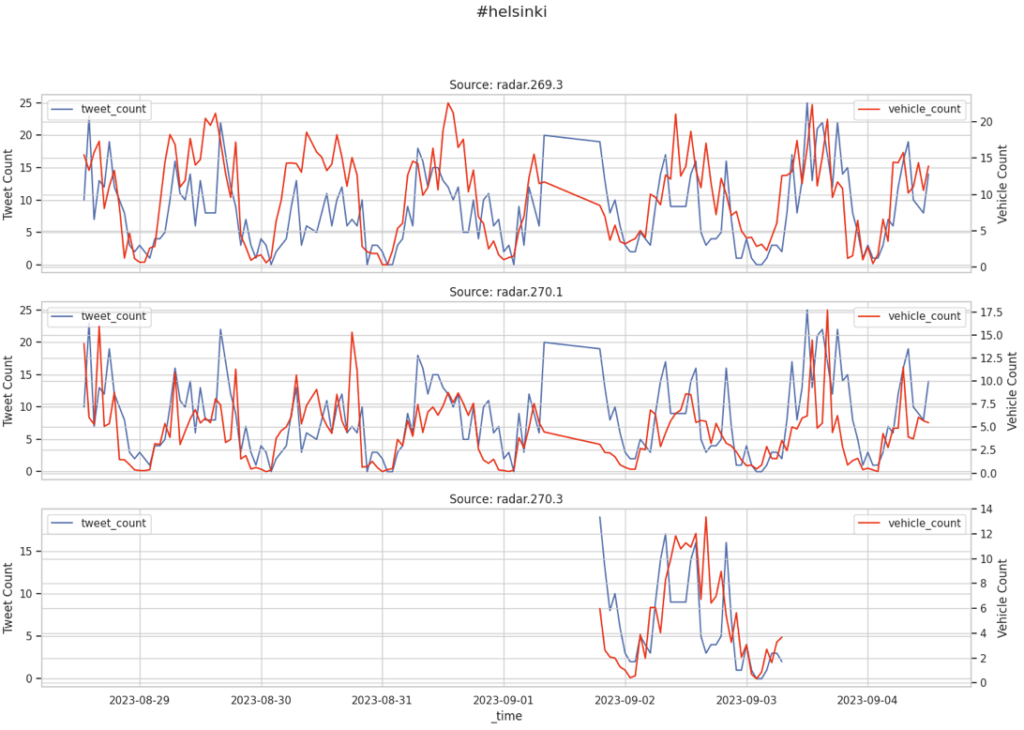In the age of smart cities, data has become the driving force behind urban planning and development. As the cross-border cities of Tallinn and Helsinki become more interconnected, understanding the needs, preferences, and trends of their inhabitants is crucial. In this context, social media platforms like X (former Twitter) have emerged as perfect resource of data, offering real-time insights that can transform the way we design and manage our cities.
But what makes this data so powerful? It’s the ability to capture the “now.” Traditional data sources often suffer from delays, making it challenging to respond quickly to the changing circumstances. Twitter, on the other hand, offers immediate access to what’s happening, making it a valuable resource for real-time insights.
In the context of smart cities, IoT-NGIN’s Smart City Living Lab partners have taken actions to explore what valuable insights Twitter can generate for the Helsinki-Tallinn traffic needs.
Twitter-data can be harnessed as a resource for planning, decision-making, and problem-solving. It’s not just about the quantity of data, it’s about the quality of insights it can provide. Here is what was identified during the progress of the IoT-NGIN project:
The primary Twitter analysis involved quantifying the usage of various hashtags over a specific time frame, encompassing city-level, event-specific, and ferry organization hashtags, to explore potential correlations with traffic congestion. Harnessing the full potential of Twitter-data comes with its own nuances. For instance, generic tweets about #Helsinki seem to show promising correlations with traffic patterns as seen on the figure below:

Yet, it’s essential to carefully interpret these correlations, as they may be influenced by the times when people are most active on the internet, not necessarily reflecting actual congestion patterns.
Additionally, using more specific tweets, especially related to major events, provided valuable real-time insights into traffic conditions. These tweets tend to align with traffic patterns during event days, making them a potentially valuable resource for managing congestion.
Furthermore, the analysis of hashtag counts plays a pivotal role in estimating interest in an event. By monitoring the frequency of event-related hashtags, we gain valuable insights into the level of attention directed towards a particular occasion. For instance, in the case of an international event, this approach becomes particularly powerful. We can effectively gauge whether individuals from Estonia, for example, are planning to travel to Finland for the event by simply counting the tweets that reference it.
While Twitter data offers remarkable insights, it also presents challenges. Rate limits, data limitations, and the need to filter events for relevance are some of the issues we’ve encountered. To address these challenges, we’re exploring strategies like ongoing data collections, streaming services, domain knowledge-based filtering, and embedding techniques to improve the accessibility and relevance of Twitter data for urban planning and decision-making.
Lastly, we must remain careful against potential cybersecurity threats, such as bots artificially inflating hashtag counts to influence decisions and potentially create confusion in the system.
In conclusion, Twitter data holds immense potential for smart city applications. It provides real-time insights, enhances understanding, and supports informed decision-making. By overcoming its challenges and continuously improving our approaches, we can unlock even more valuable insights for the future of smart cities.

